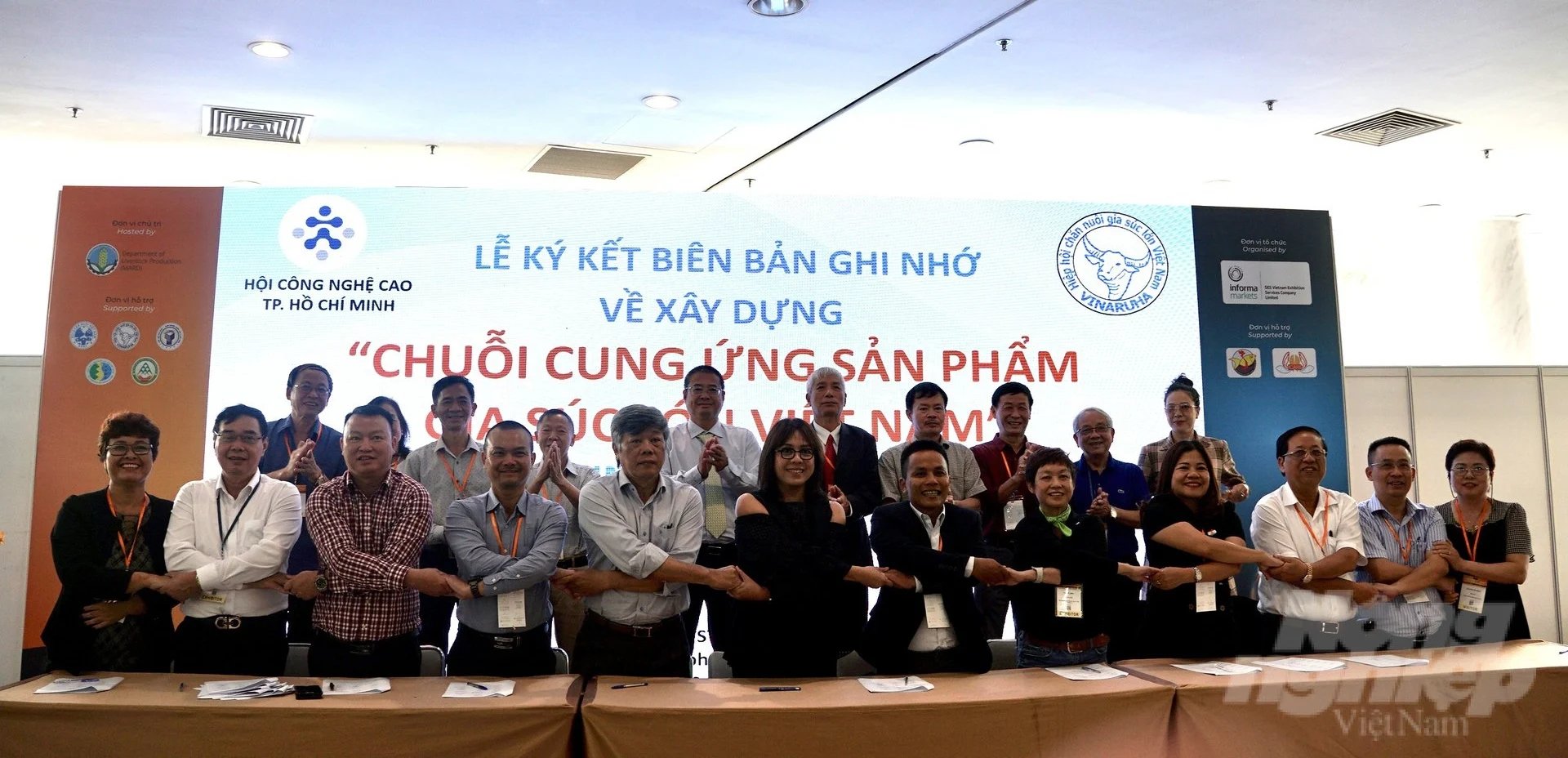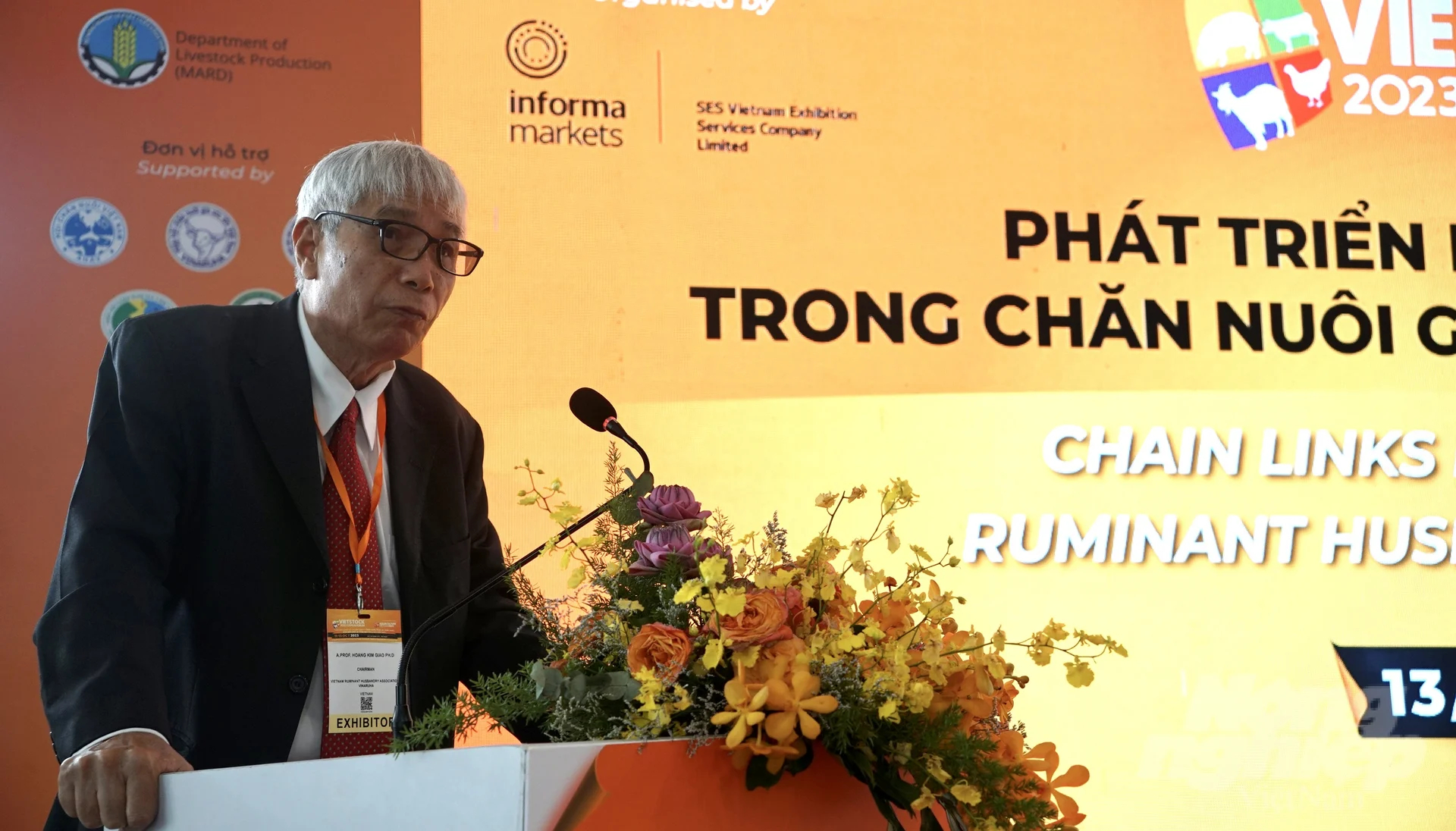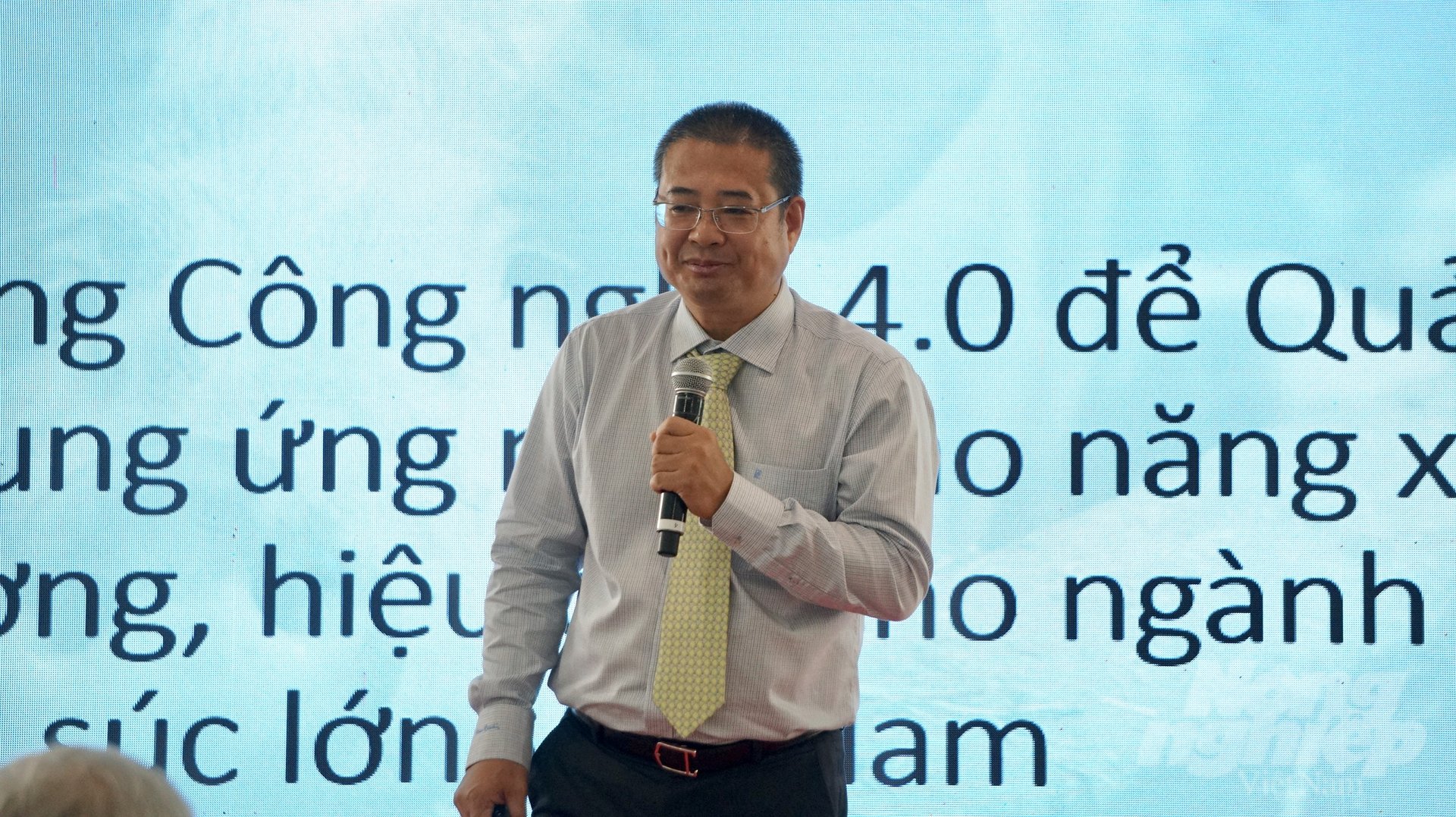November 27, 2025 | 21:04 GMT +7
November 27, 2025 | 21:04 GMT +7
Hotline: 0913.378.918
November 27, 2025 | 21:04 GMT +7
Hotline: 0913.378.918

Vietnam Ruminant Husbandry Association and Ho Chi Minh City High Technology Association signed a memorandum of understanding with 15 units participating in building "Vietnam's large livestock product supply chain" applying 4.0 technology. Photo: Nguyen Thuy.
According to statistics from the Department of Livestock Production, in 2022, Vietnam will have over 2.2 million buffaloes, with meat production of 119,000 tons; nearly 6.6 million cows, including 325,000 dairy cows, 481,000 tons of meat output, and over 1.1 million tons of milk output; the herd of goats and sheep is over 2.9 million, providing 44,000 tons of meat. Thus, all other indicators increased over the period 2018-2022 except for the decrease in the number of buffaloes.
"With such several cattle, we can only supply 42-43% of milk demand and 45- 50% of meat demand for domestic consumption. The remaining 57 - 58% of milk demand, and 50 - 55% of meat demand still have to be imported from abroad", Associate Professor, Dr. Hoang Kim Giao, Chairman of the Vietnam Ruminant Husbandry Association said. He shared his thoughts at the Workshop "Developing chain links in ruminant livestock farming in Vietnam" on October 13.

Associate Professor, Dr. Hoang Kim Giao, Chairman of the Vietnam Ruminant Husbandry Association. Photo: Nguyen Thuy.
According to Mr. Giao, in ruminant livestock farming, many technologies and technical measures have been researched and applied in production. However, due to the production scale is not large and scattered, epidemics continuously occur. Joint ventures and linkages in production and chain management are rare, not synchronized and have not yet become a habit, so productivity is low and production costs are high and unstable.
"In the future, although there are many difficulties and barriers, the ruminant livestock farming industry will surely overcome them and continue to develop. Joint venture, association and chain management development is an inevitable trend that cannot be changed, " said the Vietnam Ruminant Husbandry Association Chairman.
According to the Chairman of Ho Chi Minh City High Technology Association Dao Ha Trung, 9 important factors need to be resolved for the large livestock supply chain to develop sustainably. They are: the problem of antibiotic resistance; disease control for humans and animals; combat illegal import; increase productivity and quality; anti-brand counterfeiting; food safety; transparency, increasing trust of partners; animal welfare; sustainable livestock farming, and reducing waste.

Chairman of Ho Chi Minh City High Technology Association Dao Ha Trung. Photo: Nguyen Thuy.
In the ruminant livestock industry, many chains need to be linked such as the breed chain, the food chain, the veterinary chain... In a chain, there are many stages such as production, slaughter, processing, distribution, circulation, management and consumption... Each stage requires production conditions, environment and people with different qualifications.
Therefore, linking the entire chain in the large livestock industry is necessary. This is to promote the strengths of each party, thereby reducing intermediaries, reducing costs, reducing losses, limiting epidemics, and better managing livestock. It also supports the environmentally friendly process, products are safer and easier to trace their origin, limiting major harmful fluctuations occurring in the market...
Thereby, helping the large livestock industry in Vietnam move towards professionalism, and specialization, managing the supply chain of meat products and milk from farm to table, and ensuring food safety, hygiene and health for consumers. Aiming to develop Vietnam's large livestock farming industry to keep pace with major livestock farming countries in the world, developing sustainably in the future.
At the conference, speakers gave reports revolving around joint venture issues, links between chains and stages in production; issues of cooperation, chain management, and new technical and technological measures that have been and will be applied in the production of the large livestock industry.
On this occasion, the Vietnam Ruminant Husbandry Association and Ho Chi Minh City High Technology Association signed a memorandum of understanding with 15 units participating in building "Vietnam's large livestock product supply chain" by applying 4.0 technology.
Mr Phan Van Tan, Deputy Director of Binh Thuan Department of Agriculture and Rural Development emphasized that vaccination of livestock is one of the proactive and effective disease prevention measures, to ensure stable and sustainable livestock development. However, through monitoring, some localities have low vaccination rates, with slow inspection and monitoring of diseases in livestock and poultry herds not regular.
A small number of livestock farmers have a subjective mindset towards epidemics and do not pay attention to vaccination of livestock and poultry and hygiene, disinfect the livestock environment; and delay in reporting the epidemic situation for timely handling.
Translated by Hoang Duy

(VAN) According to Mr. Vo Minh Thanh, Director of the Tay Ninh Department of Agriculture and Environment, Resolution 57 has created a new development pathway for the locality, shifting from traditional toward modern agriculture.
/2025/11/26/4909-2-154329_878.jpg)
(VAN) Pearl grouper farming in HDPE cages not only delivers economic efficiency but also contributes to protecting the environment, creating jobs, and promoting marine-based experiential tourism.

(VAN) The model of making a living under the forest canopy through the agroforestry system in Van Son commune, Bac Ninh province, is expected to generate an annual income of approximately VND 30 million/ha.

(VAN) Many enterprises in Can Tho are harnessing natural energy and reducing greenhouse gas emissions in their production processes, thereby contributing to the promotion of a sustainable green transition.
/2025/11/24/3536-2-112800_176.jpg)
(VAN) Dong Nai now has tens of thousands of hectares of forests certified for sustainable management, and this area will continue to be expanded in the coming period.

(VAN) Vinh Ha hamlet (Dai Xuyen commune, Hanoi) is shifting away from small-scale farming as households adopt bioscurity into their breeder chicken models.

(VAN) Heavy rains make aquatic species more vulnerable to disease. Proactive water management and high-tech systems help farmers prevent outbreaks and protect yields.